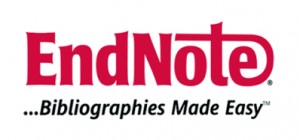Online Submissions
Already have a Username/Password for Jurnal Ilmiah Muqoddimah : Jurnal Ilmu Sosial, Politik, dan Humaniora?
Go to Login
Need a Username/Password?
Go to Registration
Registration and login are required to submit items online and to check the status of current submissions.
Submission Preparation Checklist
As part of the submission process, authors are required to check off their submission's compliance with all of the following items, and submissions may be returned to authors that do not adhere to these guidelines.
- The submission has not been previously published, nor is it before another journal for consideration (or an explanation has been provided in Comments to the Editor).
- The submission file is in OpenOffice, Microsoft Word, RTF, or WordPerfect document file format
- Where available, URLs for the references have been provided
- The text is single-spaced; uses a 12-point font; employs italics, rather than underlining (except with URL addresses); and all illustrations, figures, and tables are placed within the text at the appropriate points, rather than at the end.
- The text adheres to the stylistic and bibliographic requirements outlined in the Author Guidelines, which is found in About the Journal
- If submitting to a peer-reviewed section of the journal, the instructions in Ensuring a Blind Review have been followed
Copyright Notice
Authors who publish with this journal agree to the following terms:
a. Authors retain copyright and grant the journal right of first publication with the work simultaneously licensed under a Creative Commons Attribution 4.0 International (CC BY 4.0) license that allows others to share the work with an acknowledgement of the work's authorship and initial publication in this journal.
More information on Creative Commons here: https://creativecommons.org/licenses/by-nc-sa/4.0/
b. Authors are able to enter into separate, additional contractual arrangements for the non-exclusive distribution of the journal's published version of the work (e.g., post it to an institutional repository or publish it in a book), with an acknowledgement of its initial publication in this journal.
c. Authors are permitted and encouraged to post their work online (e.g., in institutional repositories or on their website) prior to and during the submission process, as it can lead to productive exchanges, as well as earlier and greater citation of published work (See The Effect of Open Access).
d. Authors are required to make sure submitted content does not infringe third-party copyright. Authors must obtain permission to reproduce any third-party material for online – and print, if applicable – publication in perpetuity. It is also the authors’ responsibility to include any acknowledgements requested by copyright holders, and to mark clearly third-party material used with permission, material that has separate licensing terms, and material used under exceptions or limitations to copyright.
Privacy Statement
The name and email adresses entered in this journal site will be used exclusively for the states purposes of this journal and will not be made available for any other purpose or to any other party









